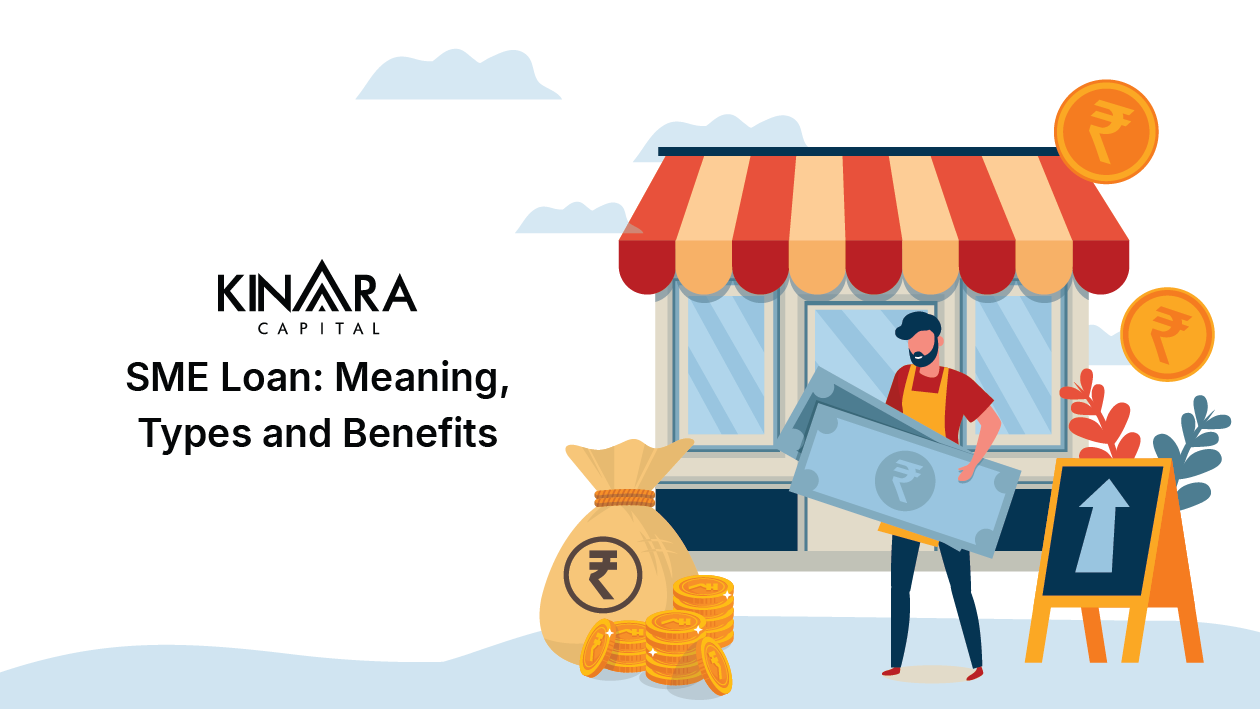
Small and medium enterprises (SMEs) form a vital part of economies across the world. In India, the segment includes micro enterprises as well, and micro, small, and medium enterprises (MSMEs) form the backbone of the nation’s economy. These businesses are responsible for contributing a major part of the country’s GDP and export revenues, as well as for employing millions of people.
SMEs have more resources and opportunities at their disposal than micro businesses, but they too need a significant amount of support to stay on a steady growth path. One way that SMEs can support their continued growth is by ensuring that they have uninterrupted access to capital. This can be facilitated by SMe loans, which can be a great source of timely financing to support seamless operations and execution of long-term growth plans of small and medium-sized businesses. Let’s explore what SME loans are and how SMEs can make the most of them to support their growth.
SME loans are a form of financing issued by a lender to a small or medium-sized business to invest in its operations and business growth. These loans can either be secured or unsecured. In the case of secured loans, the lender requires collateral to be submitted against the loan, whereas unsecured loans are collateral-free.
Historically, MSME loans have been more difficult to secure from traditional lenders as these businesses were considered high-risk. This can be attributed to the fact that many of these businesses did not have an established credit history or access to assets they could leverage as collateral against a business SME loan. This is now rapidly changing with the advent of new-age fintech NBFCs, which implement alternative credit decisioning methodologies to democratize credit access. This has made MSME funding a lot easier to access by simplifying MSME loan eligibility, as has the government rolling out a number of MSME loan schemes to support their development.
There are a number of different types of products under SME lending that small businesses can opt for to finance various business needs. Here’s a look at the main categories of SME funding:
Securing an SME loan has various advantages for small businesses. They can invest the capital they avail of in their business operations, scaling, and growth. Machinery loans offer a significant advantage, as the machinery required, particularly for manufacturing businesses, can be extremely expensive and well outside the budget of a small business. With a machinery purchase loan, these businesses can acquire the equipment they need to improve and scale up their production, giving them a competitive advantage.
Similarly, working capital loans provide vital financing that can cover the day-to-day expenses of a business, allowing it to focus on growth plans or tide over financial difficulties. These loans can also be used to invest in long-term growth plans, like expanding or improving its premises or hiring and training new employees. Bill discounting loans can help SMEs tide over lean periods when delayed payments impact their cash flows, and so on.
The application process to secure an SME loan can vary from lender to lender. Let’s use the example of Kinara Capital, a fintech NBFC that provides collateral-free loans to MSMEs. Kinara has a fully online application process. There is a simple 3-step application process, followed by approval and disbursement. If you meet our MSME loan eligibility criteria, your loan could be processed in just 24 hours. Here’s a step-by-step explanation of Kinara’s loan process:
Step 1: Quick Eligibility Check
In less than a minute, you can find out your MSME loan eligibility. You can access the eligibility check in seven different languages available on our website for a seamless experience.
Step 2: Screening
The business and the entrepreneur are screened following Kinara’s MSME loan criteria by validating the KYC and registration details.
Step 3: Document Upload
You need to submit your KYC, applicant, co-applicant, business KYC (ID and address proof), applicant PAN Card, business registration document, last 12 months’ bank statements, GST registration (if available), and business vintage proof.
Step 4: Loan Approval
Once you complete the process, your loan application will be reviewed, and if everything is in place, the Kinara officers will approve your MSME loan.
Step 5: Disbursement
Once your loan is approved, you will receive the loan amount directly in your account within 24 hours.
Here are a few common mistakes to avoid when applying for an SME loan:
SME loans and MSME loans are excellent tools for small businesses to equip themselves with the capital that they need to ensure smooth operations and fuel business growth. There are a variety of loan options these businesses can choose from to finance various different kinds of business needs. Fintech NBFCs like Kinara Capital provide simplified access to collateral-free business loans to small businesses to support their continued growth. If you are a small business owner, consider opting for an SME loan to take care of your own business needs.
SME loans can provide major benefits to small and medium-sized businesses by financing their day-to-day business needs, helping them tide over sudden expenses or setbacks, and fuelling their long-term business growth.
Interest on SME loans can vary depending on the type of loan, loan tenure, whether it is secured or unsecured, and the loan amount. Different lenders also have varying ranges of interest rates.
To apply for a business loan from Kinara Capital, you will need the following documents:
SME loans can be used to finance expansion and growth plans by investing in machinery and equipment to improve and scale up production; or by investing in a variety of improvements like renovating premises, opening up an outlet at a new location, hiring more staff members, expanding product portfolio, etc.
The repayment tenure of an SME loan can vary depending on the loan type, loan amount, and lender policies. Kinara Capital’s loans have tenures ranging from 6 months to 60 months.
